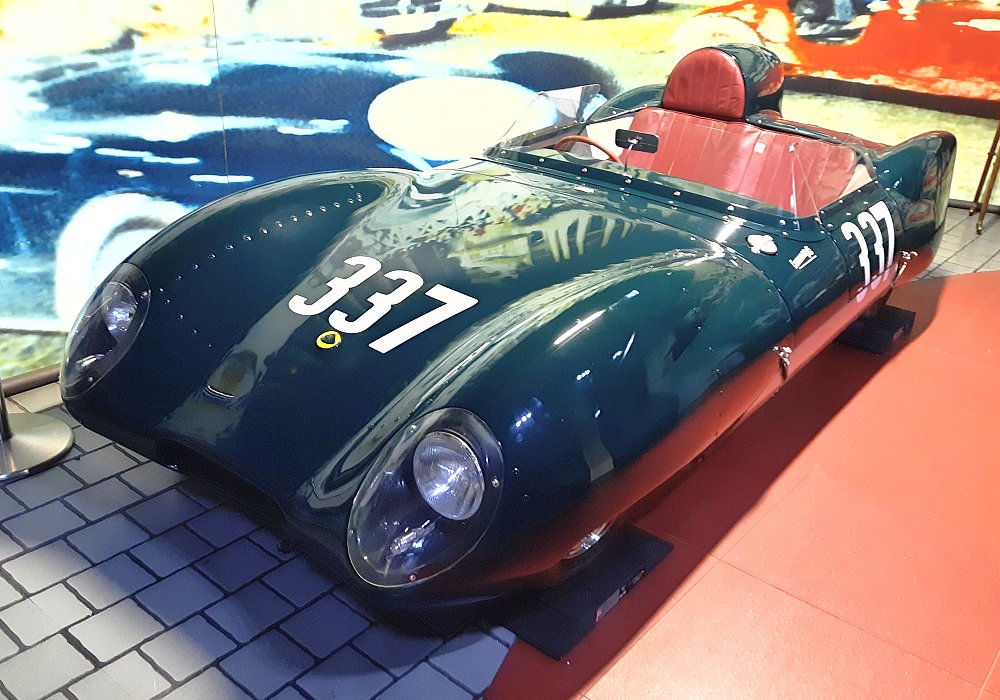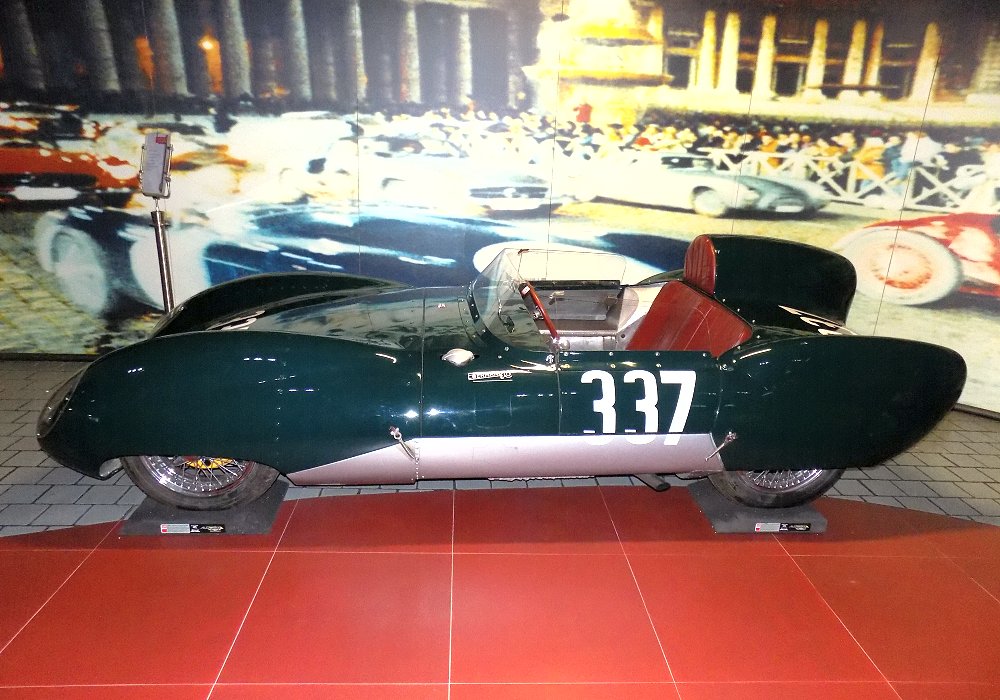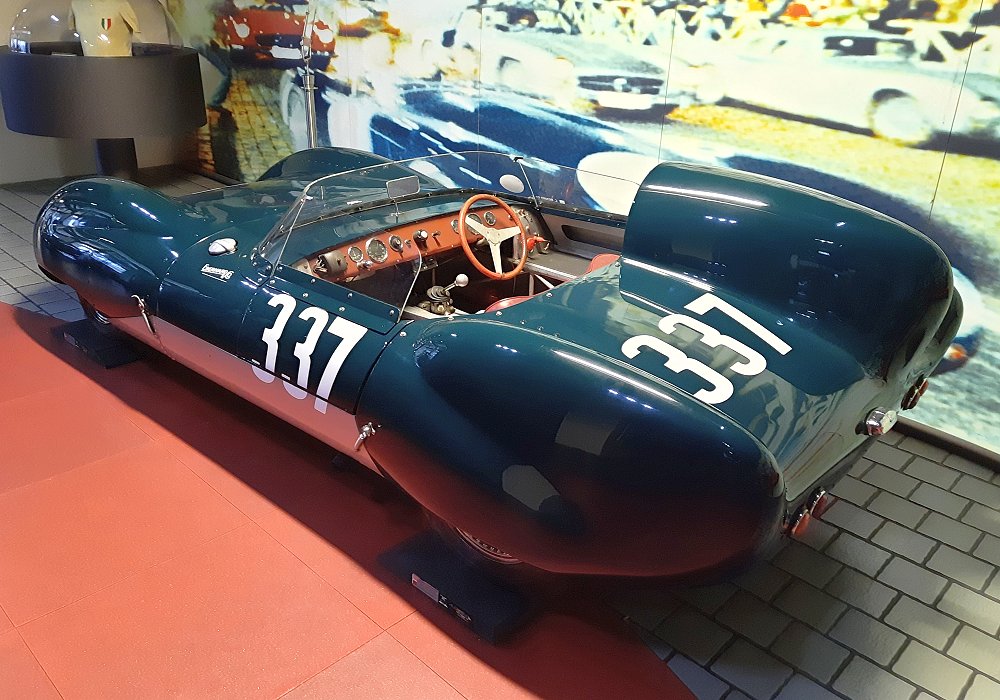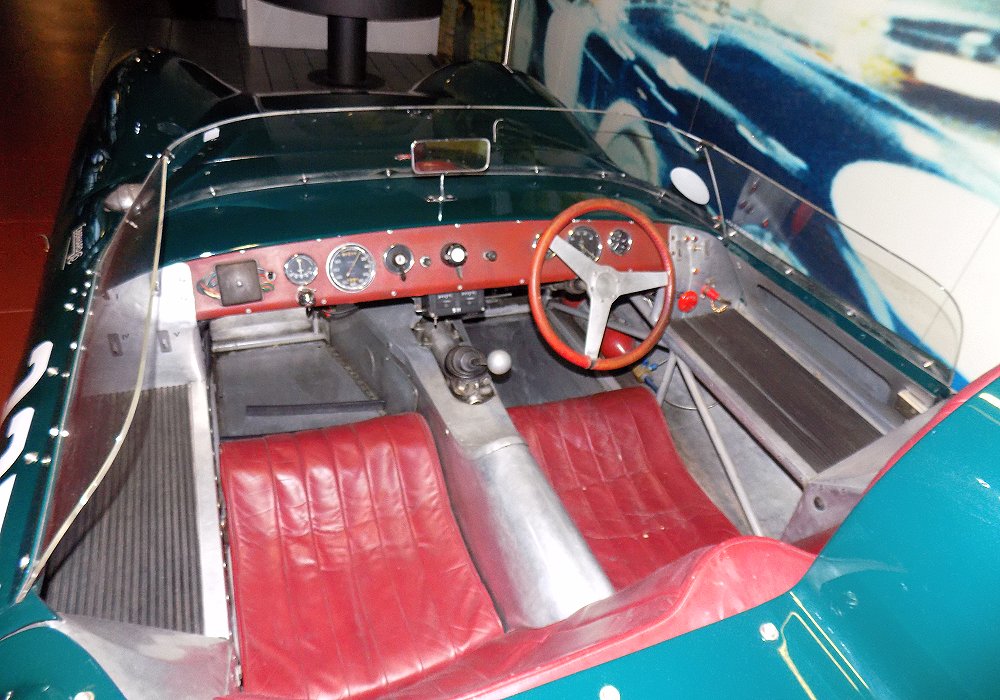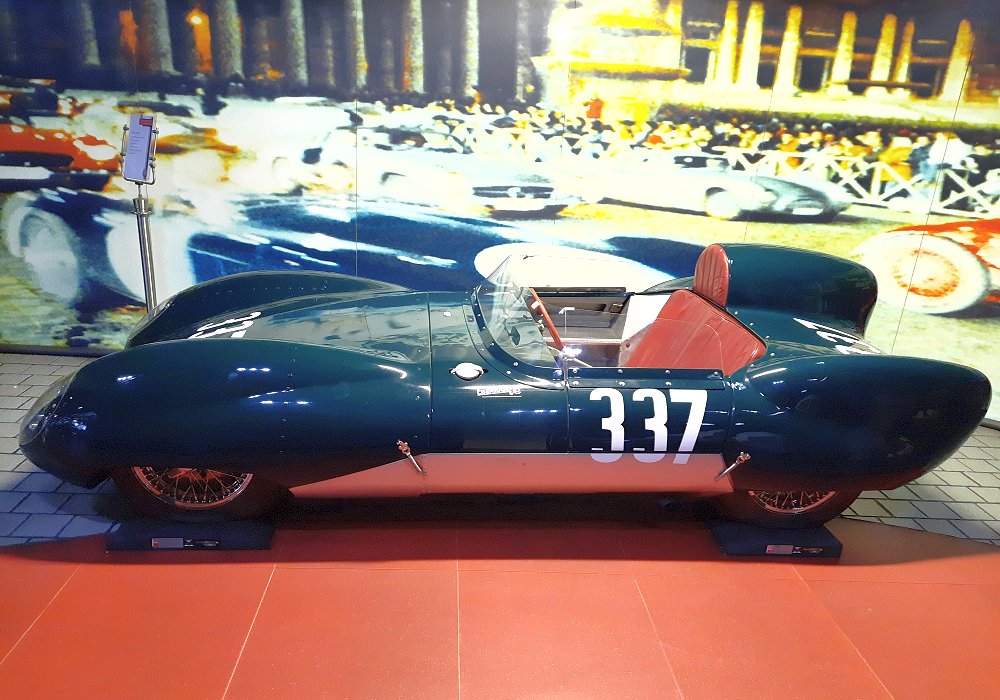Description
The Lotus Mark 11 Series 2, introduced in late 1956 and continuing through 1957, was a refined and more developed version of the highly successful Lotus Mk 11 sports-racer. The original Mk 11 had already established Lotus as a serious force in international motorsport, with class victories at Le Mans and across European racing circuits. The Series 2 version built upon that success by incorporating a series of design improvements aimed at enhancing performance, reliability, and serviceability, while maintaining the car’s hallmark qualities of lightness, aerodynamic efficiency, and outstanding handling. It was the definitive evolution of the front-engined Lotus sports-racing formula and one of the most admired small-displacement competition cars of its era.
Externally, the Mk 11 Series 2 retained the flowing aerodynamic shape designed by Frank Costin for the original car but featured a number of refinements. The nose was subtly reshaped for improved airflow to the radiator and greater stability at high speed, and the cockpit was made slightly larger to better accommodate taller drivers — a reflection of Lotus’s growing success in international racing, where driver comfort was increasingly important in endurance events. The bodywork was still fabricated in lightweight aluminium, formed by Williams & Pritchard, and followed Costin’s aircraft-inspired design philosophy, with smooth, unbroken lines and a tapering rear tail section that minimised drag.
Under the skin, Colin Chapman introduced several mechanical and structural updates that distinguished the Series 2 from the earlier cars. The tubular spaceframe chassis, a Lotus hallmark, was revised to improve torsional stiffness without adding significant weight. The front suspension geometry was adjusted for better camber control and steering precision, and the rear suspension saw refinements to its trailing-arm and Panhard-rod arrangement, enhancing stability under braking and cornering. The Series 2 also featured stronger engine mounts and improved chassis bracing to handle the increased power outputs of newer engines being fitted to customer cars.
Power came primarily from the Coventry Climax FWA engine — an all-aluminium 1.1-litre four-cylinder twin-cam unit that had become the preferred choice for serious competitors. In racing tune, the FWA produced between 85 and 90 horsepower, giving the Mk 11 astonishing performance for its displacement. Some cars were also fitted with Ford or MG engines, and a few were adapted to run the 1.5-litre Coventry Climax FWB engine for higher-capacity classes. With a kerb weight of around 450 kilograms, the Series 2 was capable of top speeds exceeding 130 mph, and its acceleration and cornering capabilities made it a formidable rival to much larger and more powerful cars on tight or technical circuits.
The Mk 11 Series 2 made its competitive debut during the 1957 racing season and immediately proved itself as a capable and durable machine. At the 24 Hours of Le Mans that year, Lotus entries again performed admirably, continuing the company’s tradition of punching above its weight. The Mk 11s consistently achieved class wins and strong overall finishes in endurance events across Europe and the United States, consolidating Lotus’s reputation for engineering brilliance and racing efficiency. The combination of lightness, aerodynamic refinement, and predictable handling made the car a favourite among privateers, many of whom continued racing Mk 11s well into the early 1960s.
The braking system remained conventional, with drums on all four wheels, though improved cooling ducts were fitted to reduce fade during long-distance events. Steering was unassisted and exceptionally communicative, offering the kind of precision that became synonymous with Lotus cars. The balance between front and rear grip allowed skilled drivers to exploit the chassis fully, making the Mk 11 Series 2 a car that rewarded smooth, precise inputs rather than brute force.
Inside, the cockpit was spartan but purpose-built. The aluminium body panels doubled as interior surfaces, and instrumentation was limited to essential gauges — oil pressure, temperature, rev counter, and speedometer — all placed within easy view of the driver. The seat was fixed directly to the chassis, and the driving position was reclined for optimal aerodynamics and weight distribution. Every component served a purpose, reflecting Colin Chapman’s unrelenting pursuit of simplicity and performance through minimalism.
Approximately 270 Mk 11s were produced in total, with a significant portion built to Series 2 specification. Many were exported to the United States, where they competed successfully in SCCA events, often dominating their class against cars from Porsche and Maserati. The car’s blend of speed, agility, and reliability made it a mainstay in both amateur and professional racing circles.
Today, the Lotus Mk 11 Series 2 is revered as one of the most influential sports-racing cars of the 1950s and one of the purest expressions of Chapman’s design philosophy. It represented the perfect synthesis of lightweight engineering, aerodynamic intelligence, and driver-focused simplicity. The lessons learned from its development would directly influence future Lotus competition cars — particularly the mid-engined designs that followed — and its achievements on the international stage helped secure Lotus’s position as one of Britain’s leading racing constructors.
The Mk 11 Series 2 stands as a timeless example of 1950s motorsport ingenuity: a car that achieved greatness not through power or extravagance, but through the intelligent application of design, lightness, and balance. It remains one of the most admired and collectible early Lotus models — a symbol of the brand’s transformation from a small British workshop into a name recognised around the world for technical brilliance and racing success.
